Diving - The adventure continues!
Red Sea Liveaboard - November 2019
After 2018's wonderful liveaboard in the Maldives, I was keen to do another in 2019.
I didn't want to spend as much money, so the Red Sea looked a good bet. 3 other Aldershot Dolphins were interested, too, and after a bit of to-and-froing, we ended up booking a Deep South Red Sea week on the Blue Voyager with Blue O Two.
Blue O Two managed to arange our flights to miss the Thomas Cook collapse (unlike the other people on our boat!) and we travelled together to Gatwick in a shared taxi.
Check in was busy, but untroubled (although not being able to check in online, meant the 4 of us were scattered around the plane) and we had time to buy some food and drink for the flight before boarding.
The plane was a fairly cramped TUI one, but the flight was reasonable enough by budget charter standards and I watched a film and read most of the way.
On arrival in Hurgahda, we were met by a Blue O Two rep and after a bit of a delay getting our luggage, we made our way outside to find it was just the 4 of us on the minibus south to Port Ghalib.
The journey was in darkness, but passed uneventfully. I expected us to be the last to arrive at the boat, but it turned out we were the first 4! The crew told us that the other passengers weren't expected to arrive until 3:30 the next morning (in the end, they arrived at 5:30 AM having had virtually no sleep).
Day 1: Abu Dabab & Elphinstone
We finally got going after a leisurely (it turned out) breakfast and headed a fairly short distance to Abu Dabab 3, where we carried out a 'check dive' to make sure our weights were correct and that we knew how to launch a DSMB.

The view when cleaning my teeth each morning was always similar to this.
Most people on the boat were active UK BSAC divers, so familiar with DSMB usage, but everyone in our group took a guess on weight (all about 6KG as I recall), but Dawn was unable to sink and I was probably a little heavy as I was only wearing the 2mm shorty wetsuit I'd used in the Maldives the previous year. Everyone else in our group had long 5mm wetsuits, but aside from one moment on one night dive I never felt cold in my shorty and the 3mm jacket I'd brought to wear over it if I did went unused for the whole week.
This first dive was pretty gentle, only down to 15M or so, but lasting a full hour.
The site was a pleasant reef, with great vis (25-30M was pretty standard) and Lion Fish, 3 Blue Spotted Stingrays, Anenome (Clown) Fish, Pipefish, amongst the numerous other reef species.
While I was photographing a Lion Fish, Ria, Dawn and Julian spotted a turtle swimming and got some good photos and videos - You can't be everywhere at once!
We then moved onto one of the iconic reefs of the southern Red Sea, Elphinstone.
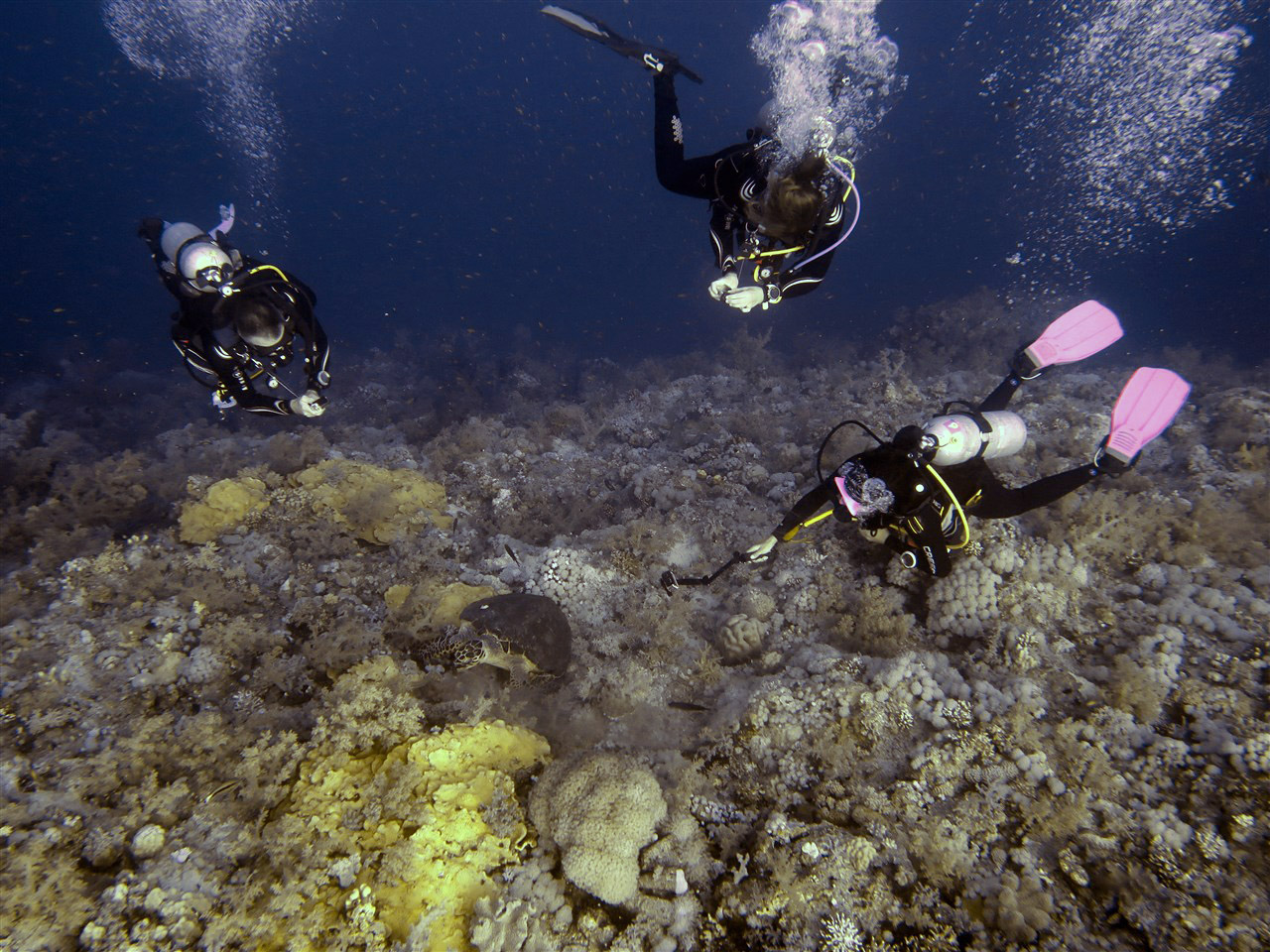
Julian, Dawn and Ria watch a turtle dining on soft coral.
Ths reef touches the surface along most of its length, has two plateaus around 25M at each end and then drops away to the 60+M seabed around the edges.
On this visit, we dropped in on the Southern end of the reef and descended to the plateau there, swimming down to 33M and then turned back to swim north along the east side, spotting a turtle grazing on soft coral.
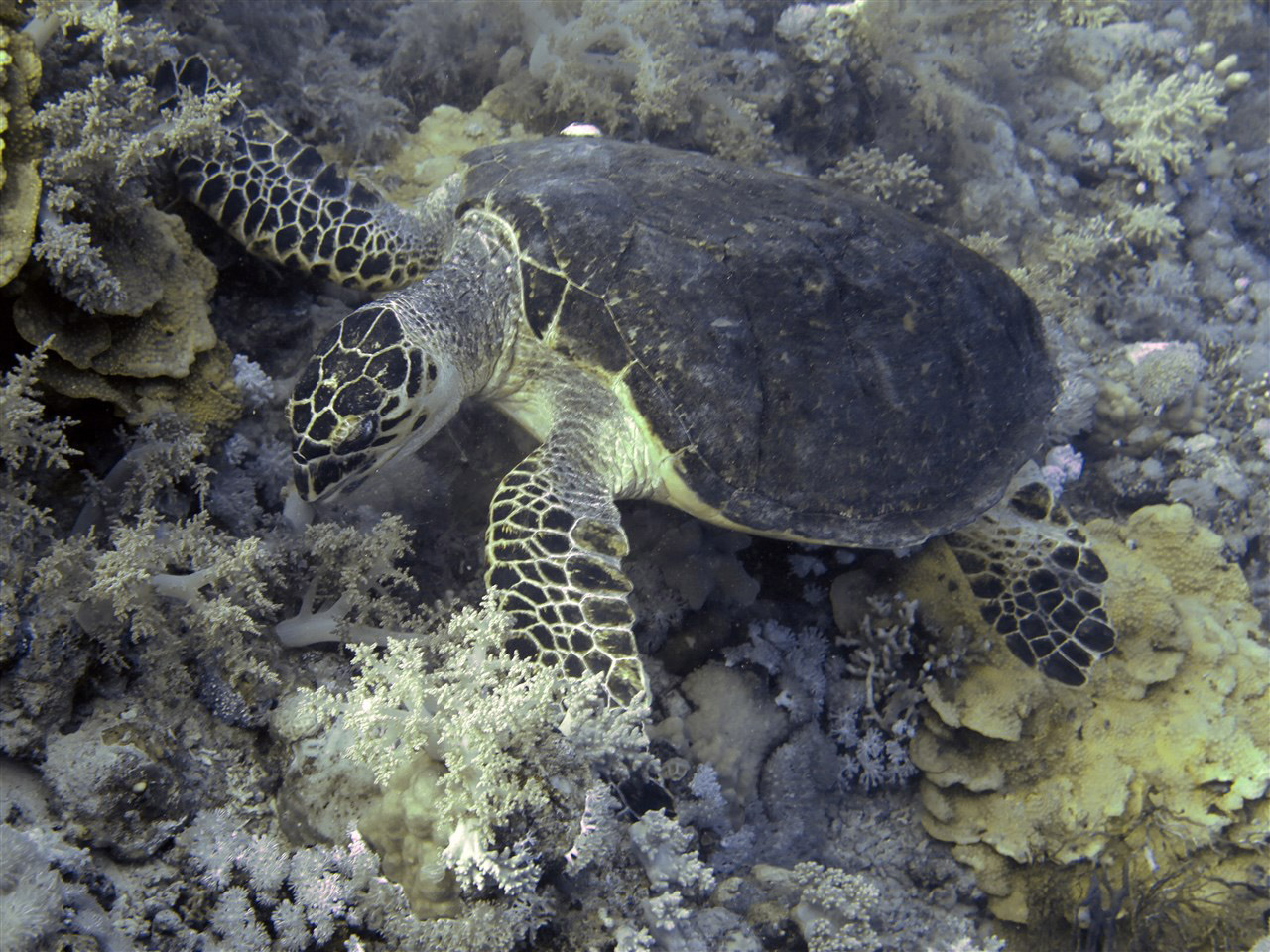
The turtle wasn't discouraged from eating by our presence.
As we headed back to the boat, there was much excitement and pointing from other divers and in the far distance I just made out the movement of a shark, which I was told back on board was an Oceanic White Tip.
During this dive there was a slight North to South current, but nothing overly challenging, although the dive only lasted around 40 minutes and was to prove one of the shortest of the trip.
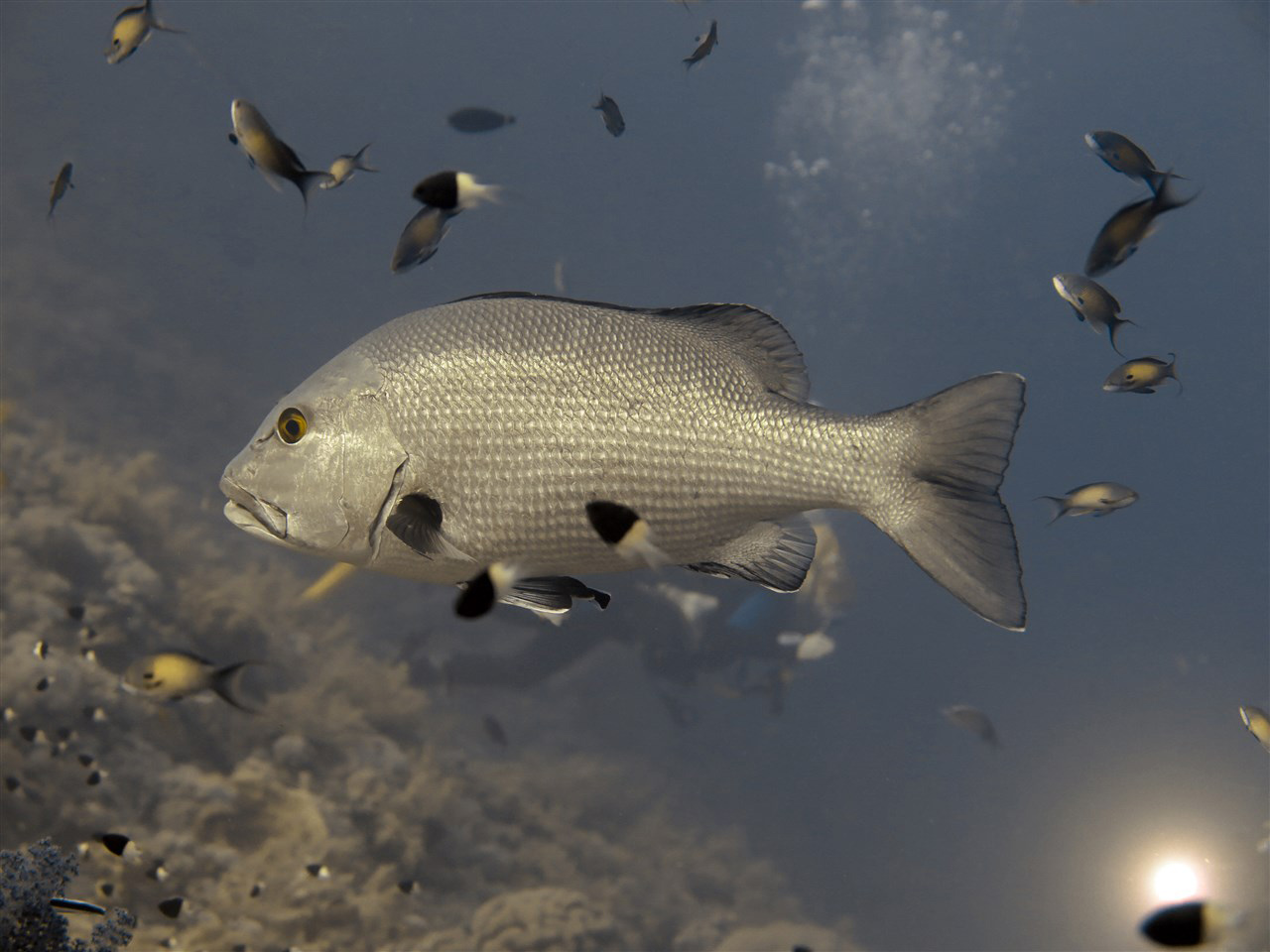
...
Once back aboard the boat (we nearly always jumped from the stern and returned back up twin ladders there to the dive deck) and lunched, we started a 14 hour trip south to the St John's area.
Dawn, especially, was worried about sea-sickness, but aside from a few slightly choppy spells, the seas were pretty calm and no-one in our group (or on board generally, as far as I'm aware) was ill.
We all slept fairly early that night as we were told that the following morning we would be woken at 6AM, which was to become the norm for the rest of the week...
Day 2: Small Gotta, Umm Al Aruk and 'Dangerous Reef'
We were woken at 6 by a knock on the cabin door and a cup of coffee and were up and ready for our first dive briefing at 6:30AM.
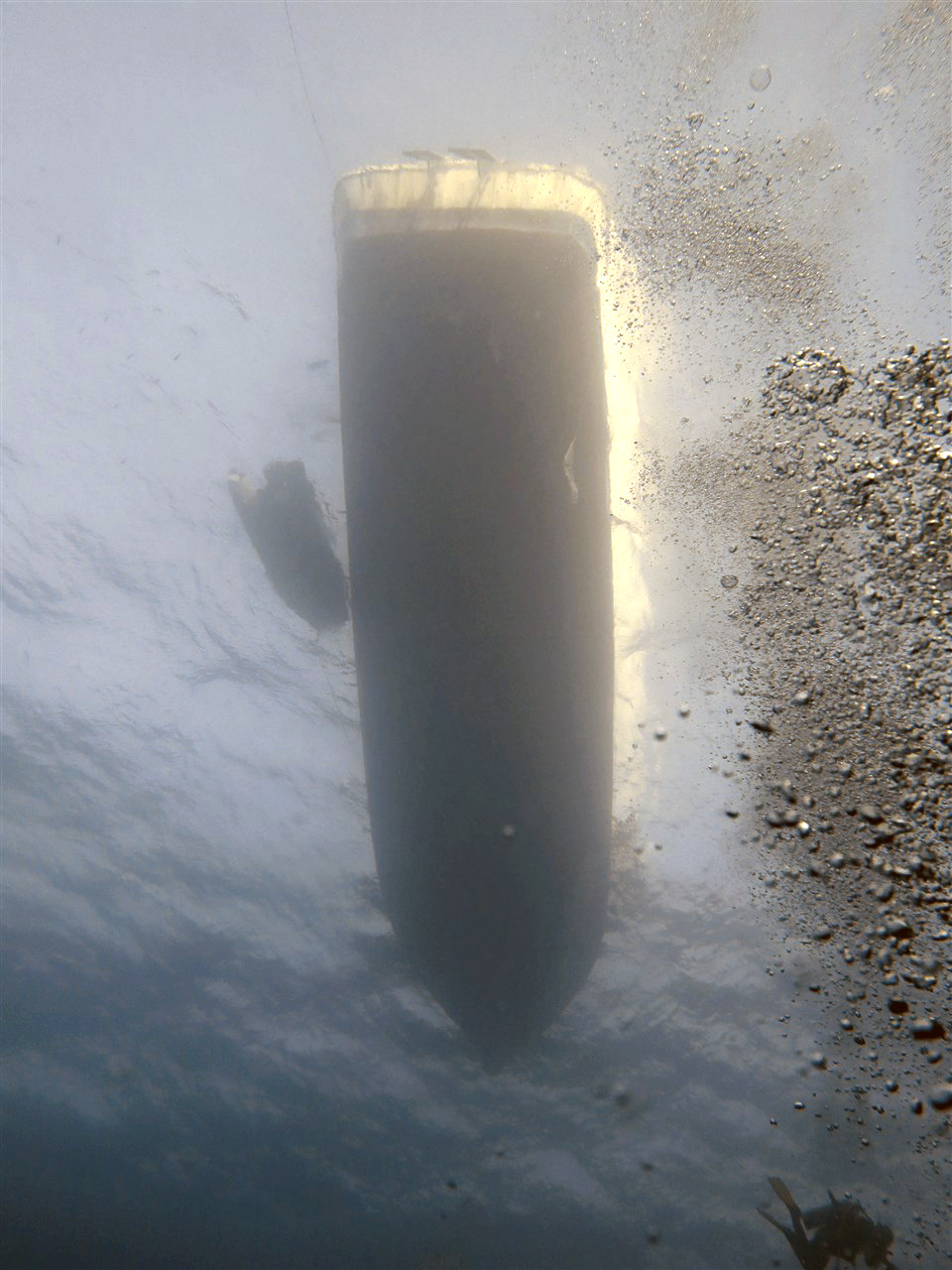
The Blue Voyager above us
Even Ria, who really doesn't like early starts, seemed pretty awake and keen to go diving and we were introduced to 'Small Gotta' or Gota Saroya.
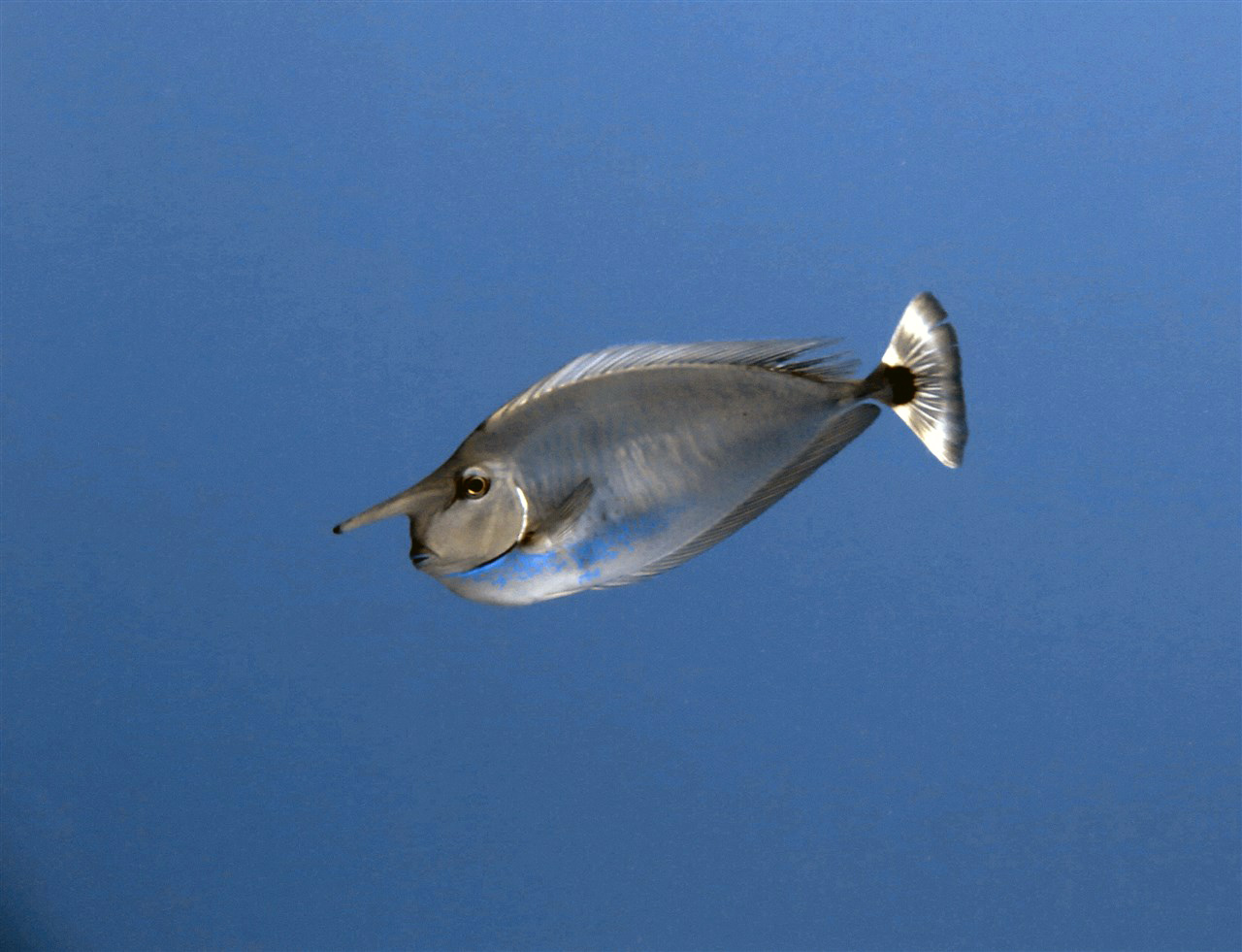
Unicorn Fish
This was a plenty dive along the wall of the ‘small reef’. We swam counter clockwise, to deal with the small amount of current, and saw plenty of life, including a small Moray Eel and numerous Jacks or Trevallys hunting ‘in the blue’.
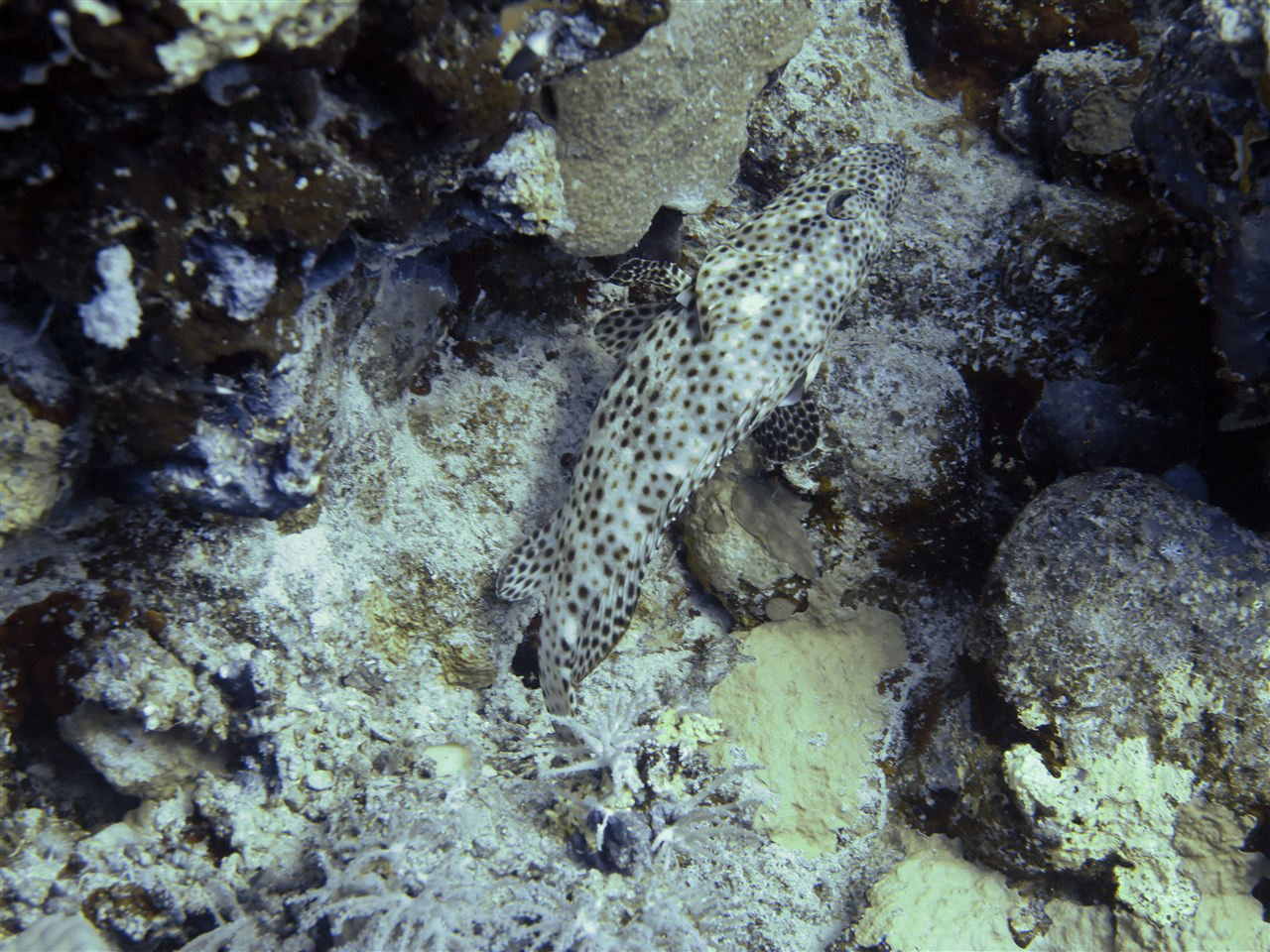
Malabar Grouper
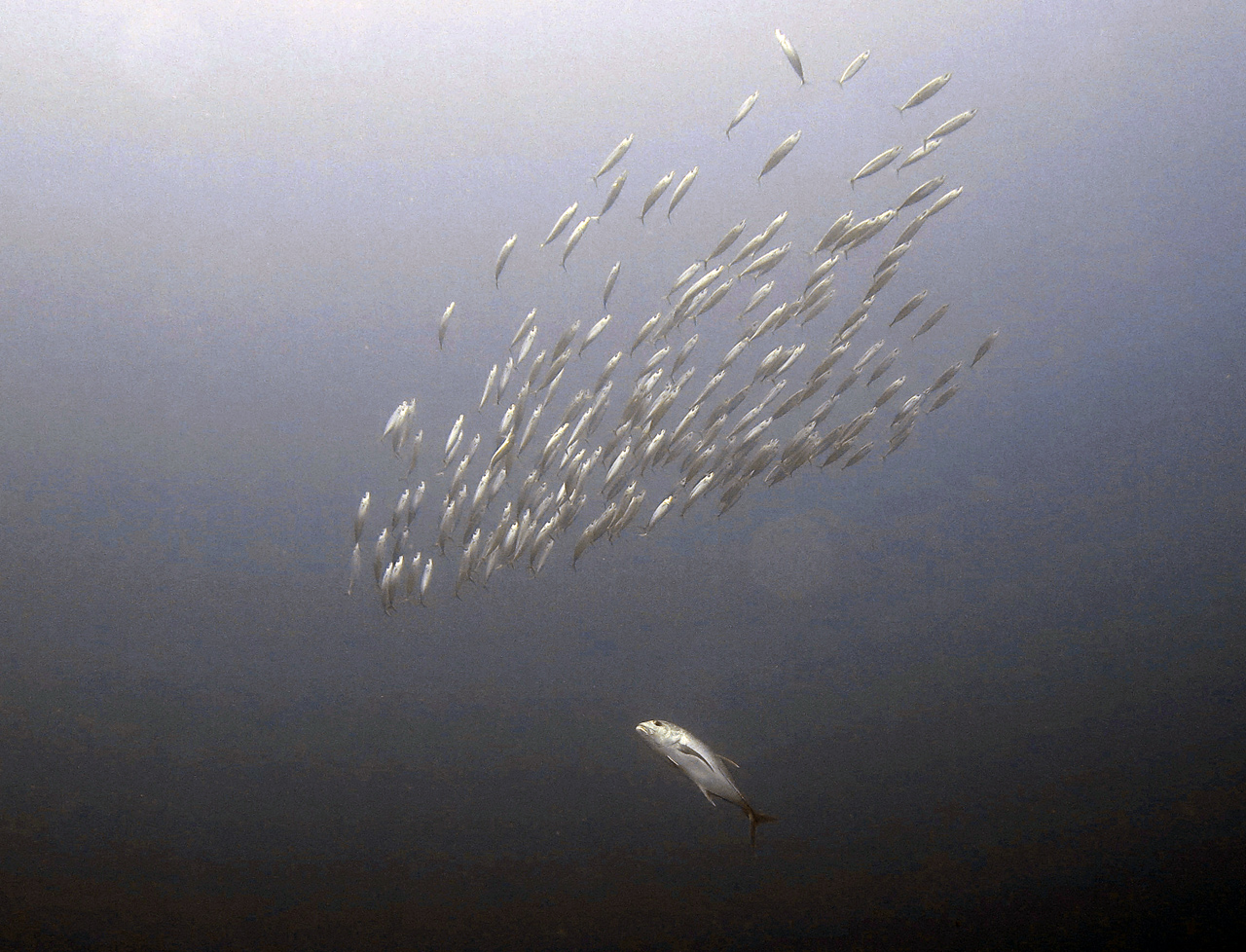
Hunting Trevally
We also saw our first Napoleon Wrasse and some Unicorn Fish.
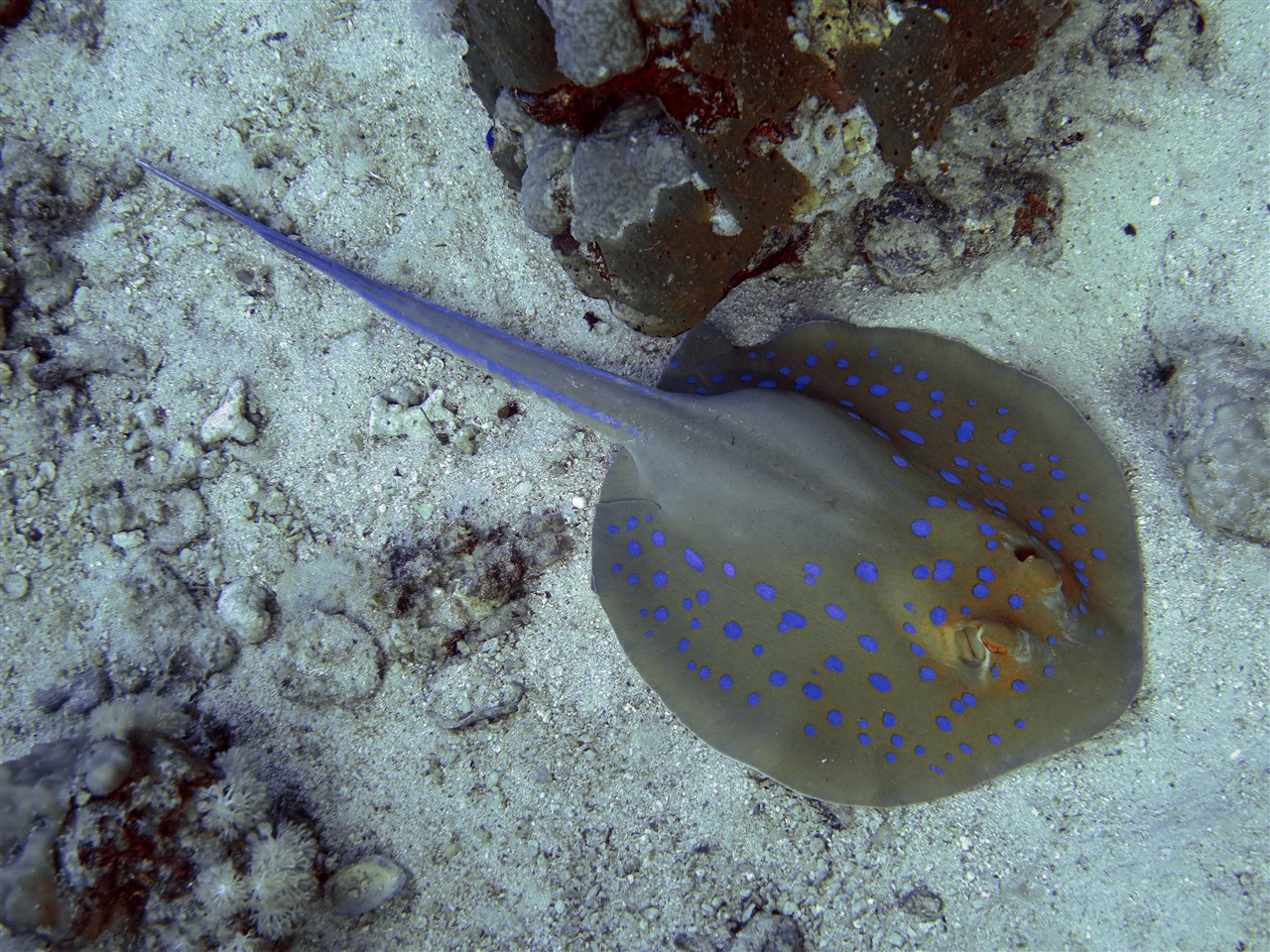
Blue Spotted Stingray were a regular sight
Back on board, we breakfasted and then relaxed for a short while the boat moved to Umm Aruk.
This dive was among some impressive pinnacles and it was a lovely site with some interesting fish, including Blue Spotted Stingrays, Moray Eels (one large one, in the open, unusually), a Malabar Grouper, Bigeye Emperors, Parrotfish and a Porcupine fish swimming in open water.
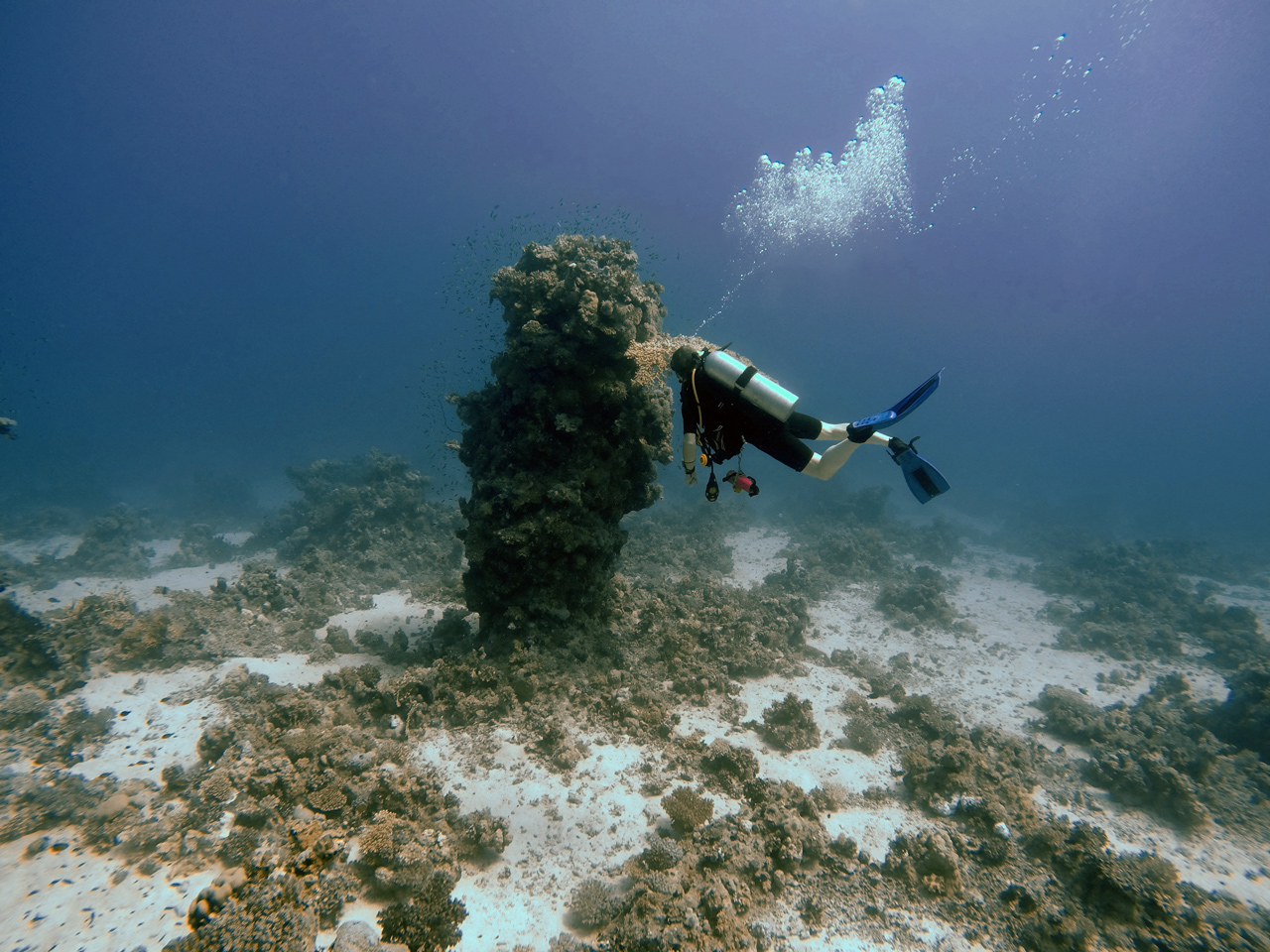
Julian's photo of me passing the Coral Heads of Umm Al Aruk
At the end of the dive, which we joined one of the guides for, we saw an anemone garden with many anemone (clown) fish near the surface.
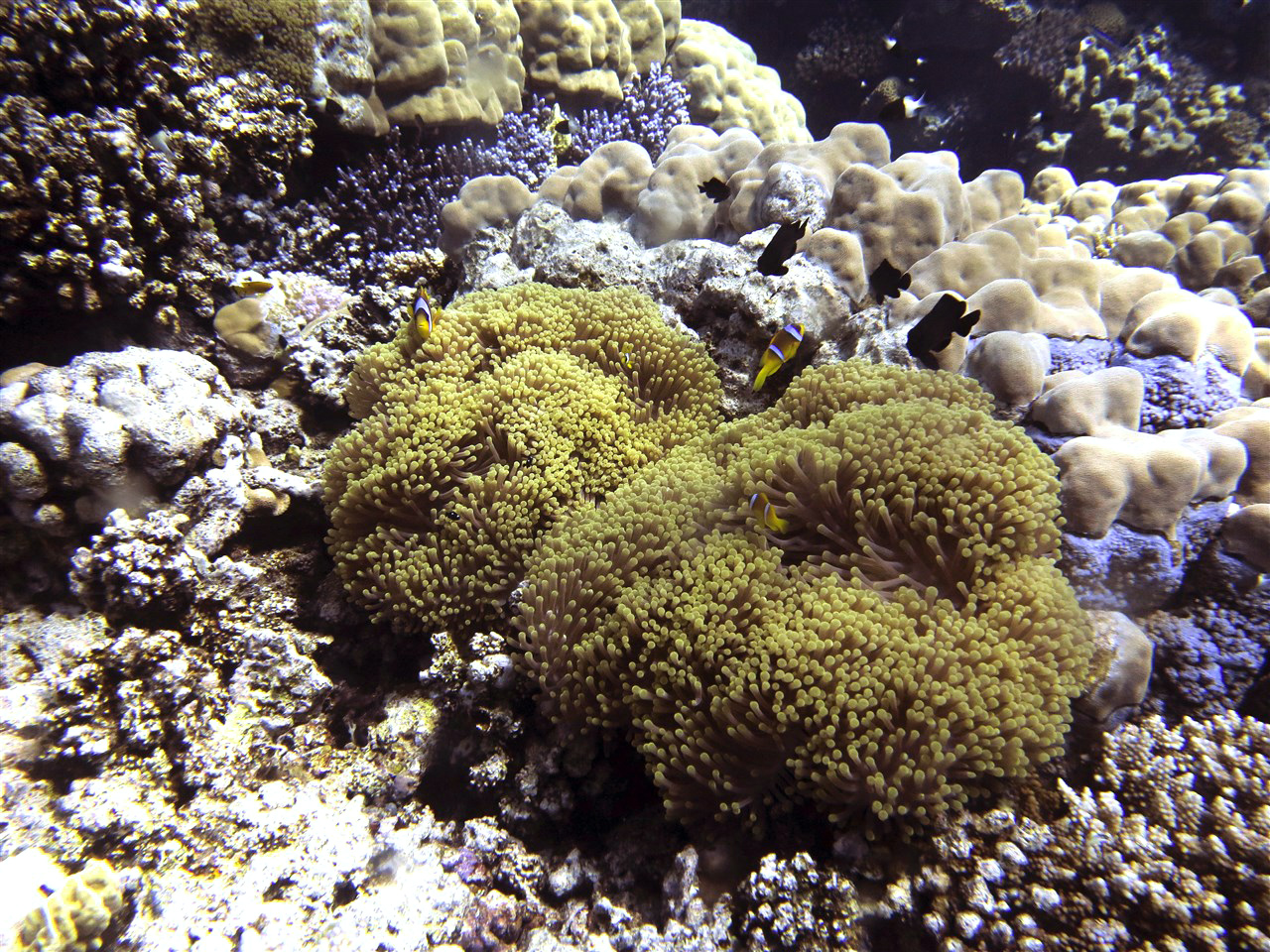
Anenome Fish in their garden
My camera, rather worryingly steamed up during this dive and I discovered, back on the boat, that I'd packed suntan lotion, rather than Silicon Grease for the seals... Fortunately, one of the other divers had some and the problem didn't reoccur!
We moved again over lunch to a site called ‘Dangerous Reef’ - There was some concern (possibly feigned as I don’t think anyone really thought they’d take us anywhere truly dangerous) voiced, but we were assured it was ‘just called that’ - No explanation WHY, though, I noticed!
This was another enjoyable dive around the reef.
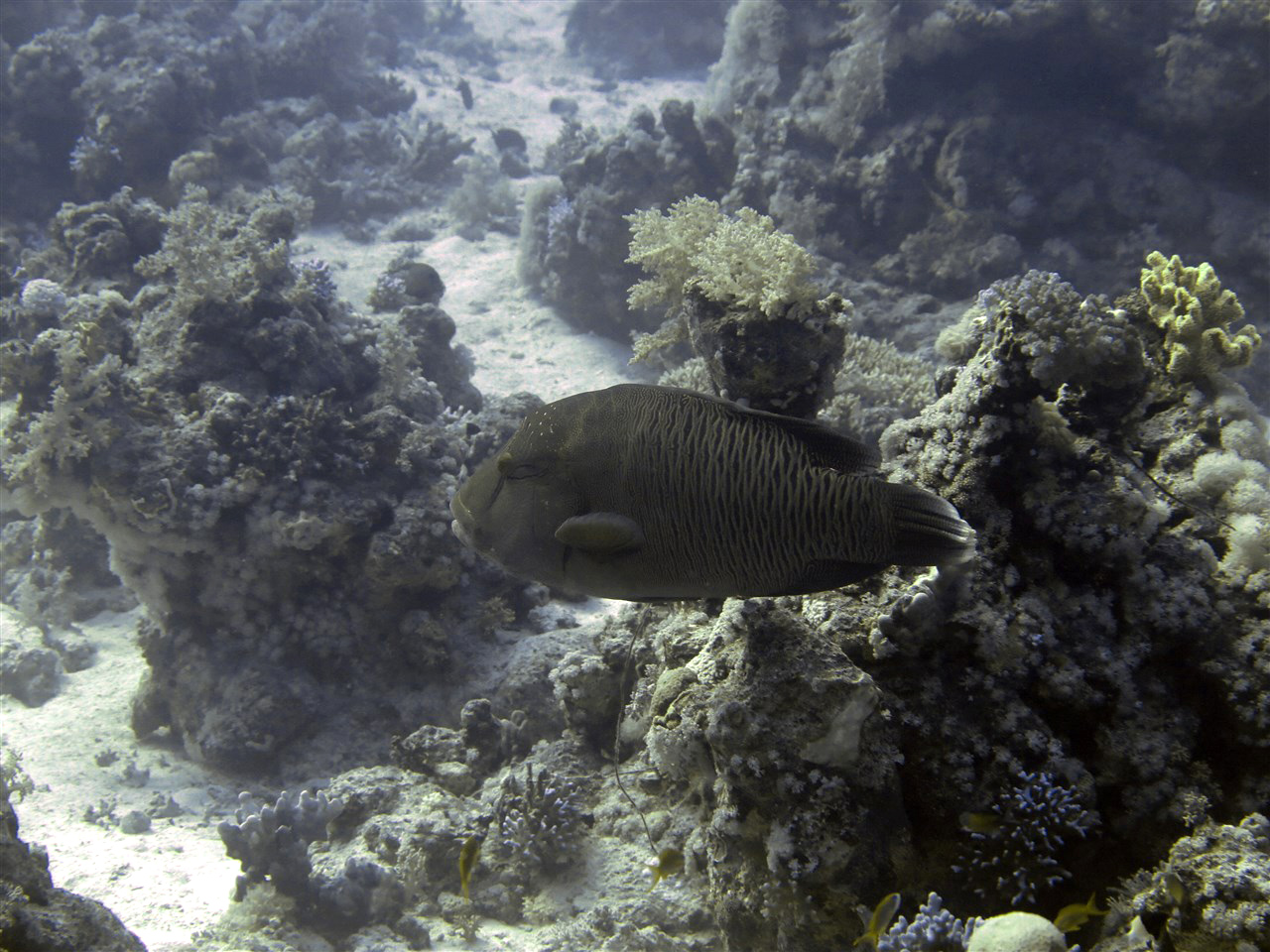
We saw a number of large Napoleon Groupers on this trip
We dropped in and went down to the seabed at around 27M and swam out from the reef wall. Out here we spotted more Stingrays and Moray Eels, but headed back towards the reef after around 15 minutes.
Back on the reef, we ventured into some ‘caves’ .There was light entering from above, so obviously somewhere to surface into in an emergency, although getting out would be a challenge!.
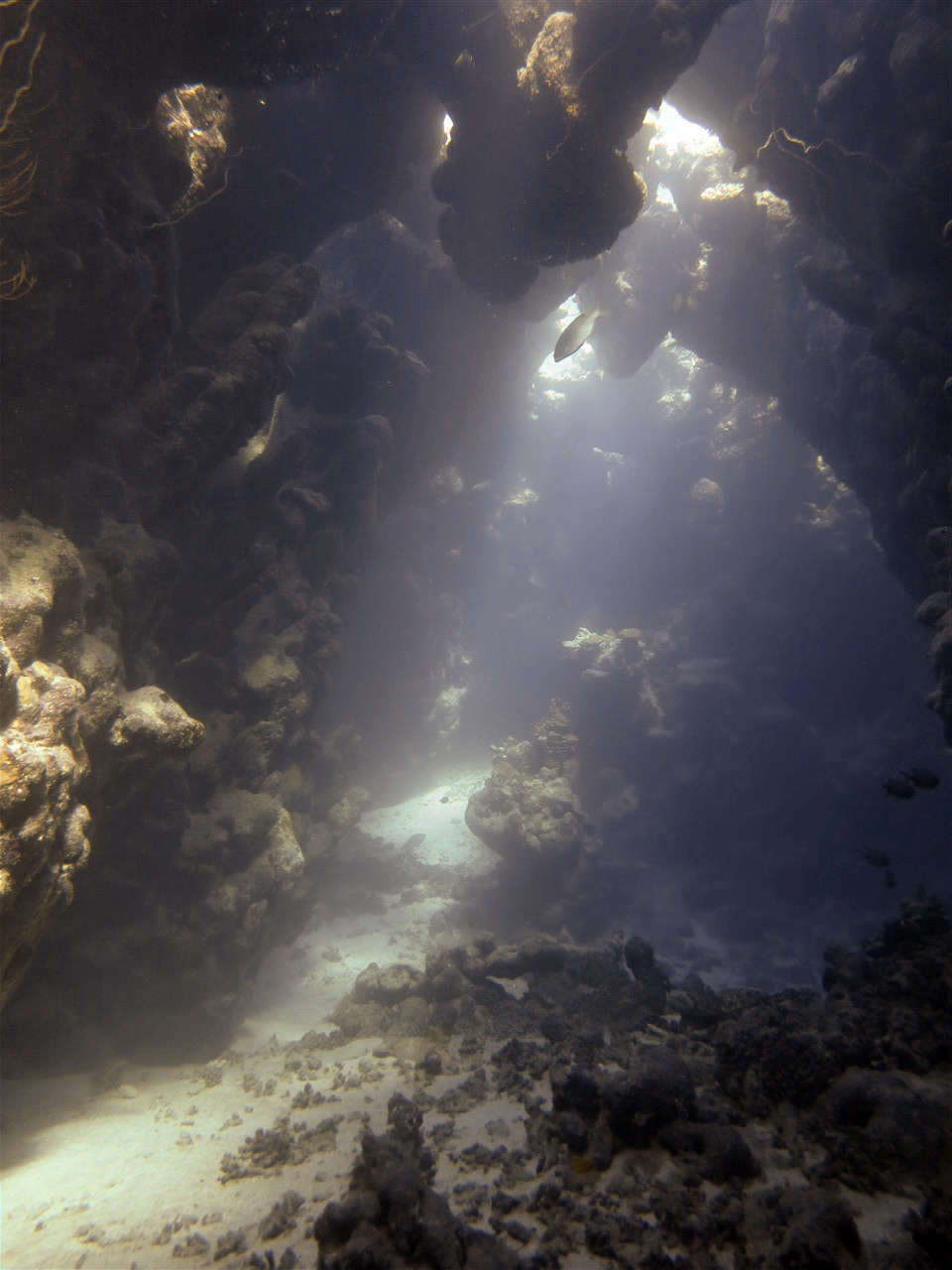
Light was beautiful in the caves
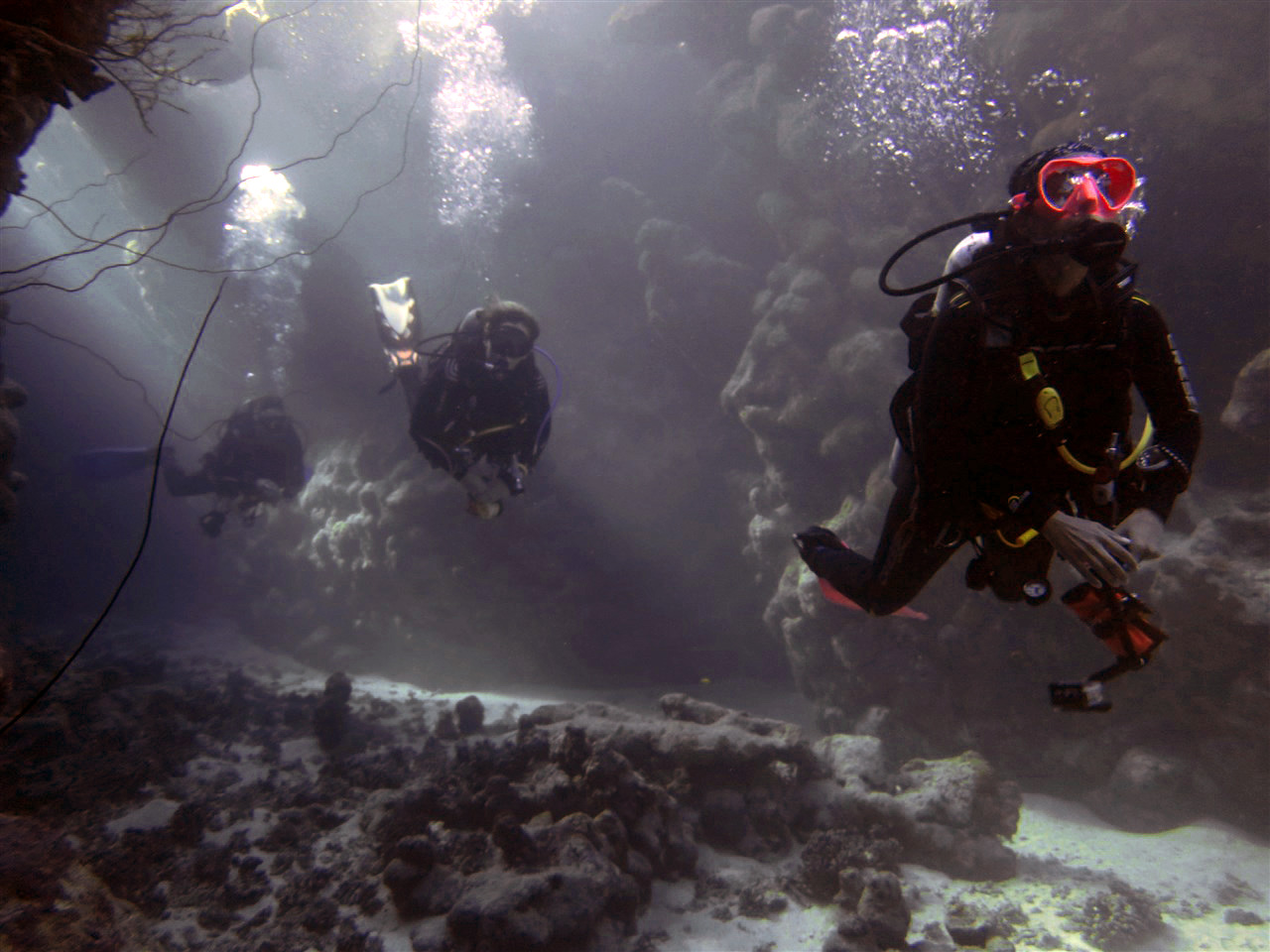
Ria, Dawn and Julian explore the caves
The light coming in, though, was beautiful (something that was to become a bit of a theme on this trip), but we soon exited and explored along the wall, taking in all the life before we ran towards the end of our air and surfaced.
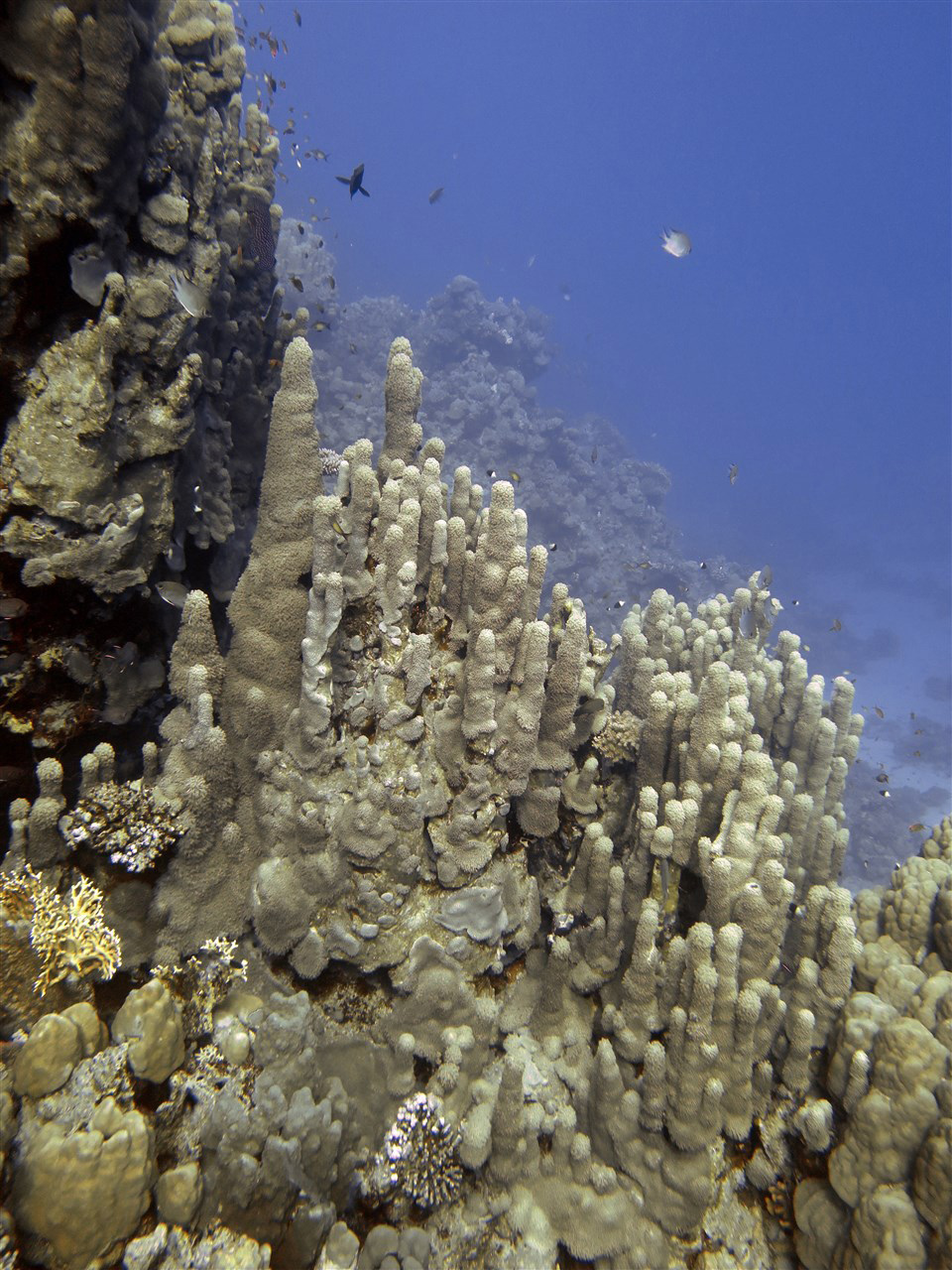
Stunning Coral Pinnacles
Before dinner, though, we had one more dive to do, a night dive on Dangerous Reef again.
Having seen the reef in daylight was a definite benefit as we could find our way around well, although the clear water made our torch and video lights very effective.
There were a fair number of Morays out and hunting, although they hid away from our lights when they could, plus Bigeyes, Angel Fish, Butterfly fish and a long corrugated worm creature (WHAT WAS IT?).
Video from the dive
We all came out buzzing with excitement after our first night dive of the trip.
Day 3: Habili Ali, Big Gotta and Paradise Reef
In the morning we moved a short way and did the first of few dives of the trip from the Zodiacs.
We’d been expecting to do quite a few dives from these boats, but as it turned out, there wasn’t much need and it was easier to just jump off the boat. Even when the option of using the Zodiacs was offered on a few sites, it was usually as a way of reducing the distance or time of the dive and none of us was worried about doing that!
The first site on this day was called Habili Ali.
The reef lies about 5M below the surface and then drops away to around 40M.
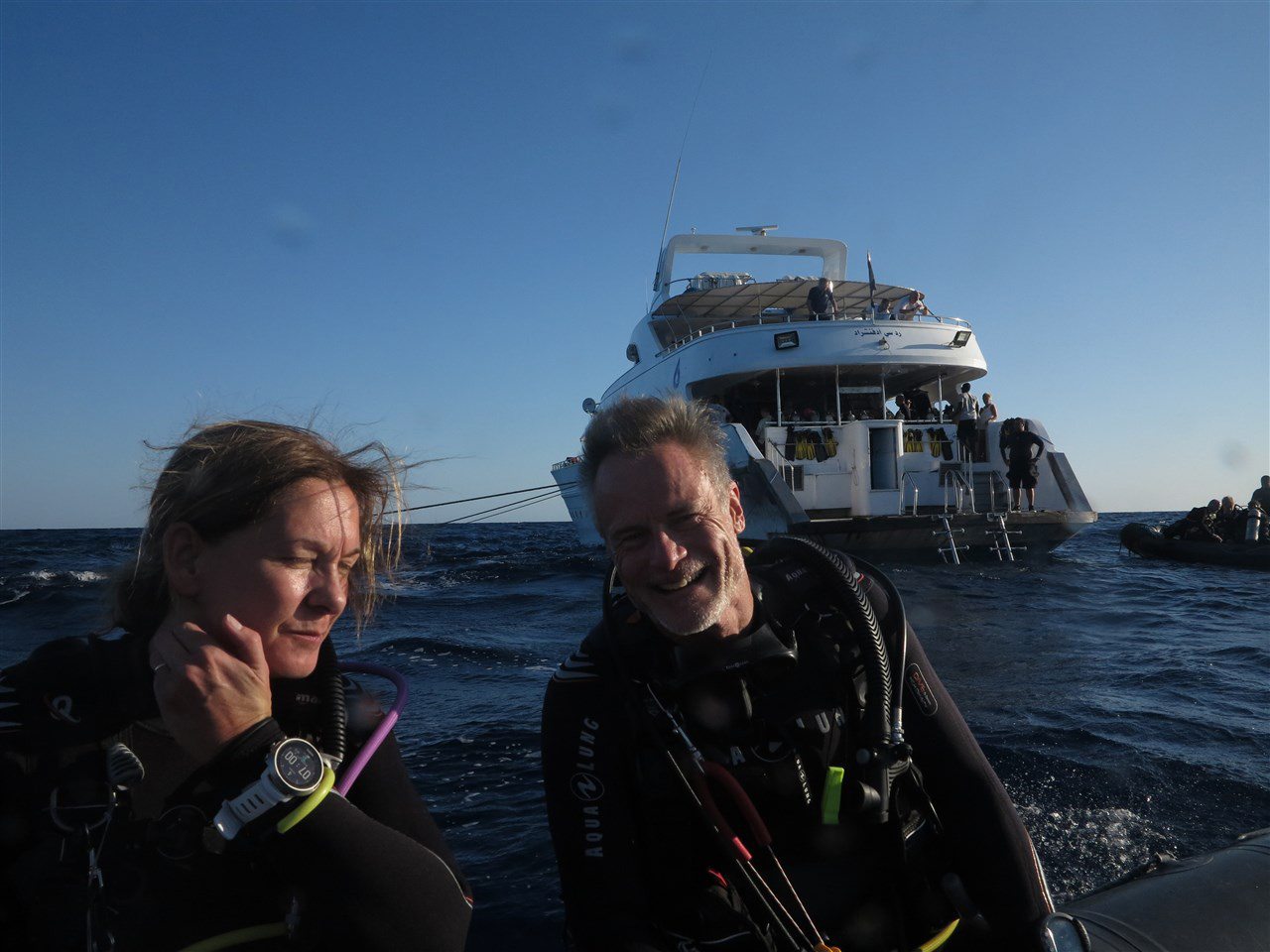
Dawn and Julian on the Zodiac
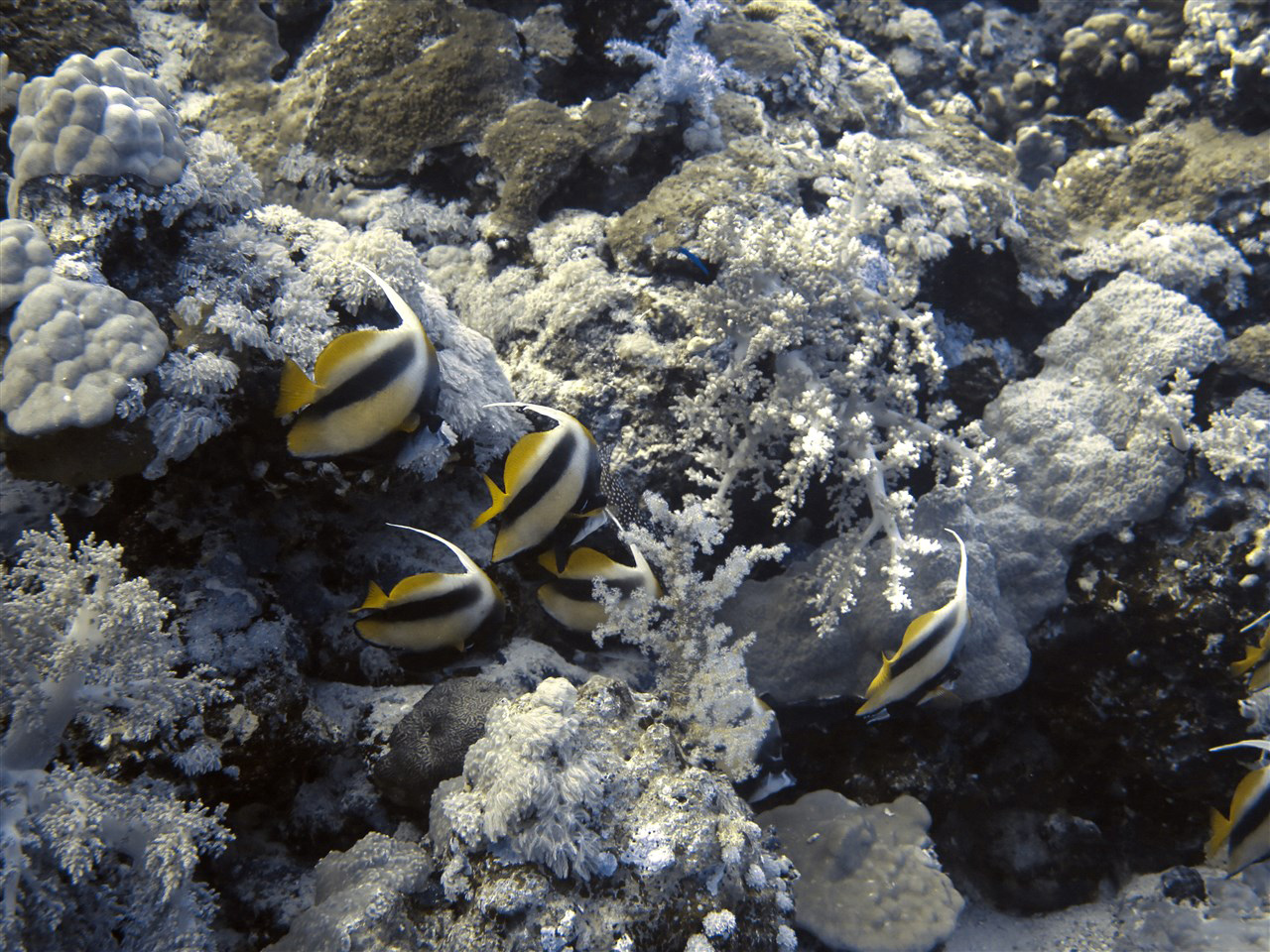
Banner Fish
We took the Zodiac to a point almost opposite our anchorage and then made our way around the reef and returned to the main boat to exit.
There was plenty of live here and we were able to finish the dive on the reef top, enjoying the colours in the shallows. This dive reminded me very much of similar dives in Bunaken, Indonesia, where we’d often spent 15 minutes at the end of a dive just drifting around in the shallows taking in the plentiful life, both fish and coral.
Our post breakfast dive was nearby at a site named Gota Kebir.
On this dive, we dropped in from the boat’s dive platform and down to around 30M where the reef plateaued, dropping from there down to around 50M.
We swam over the plateau at around 25M and then back onto the wall of the reef, at one point I chased a large Napoleon Wrasse down to around 33M.
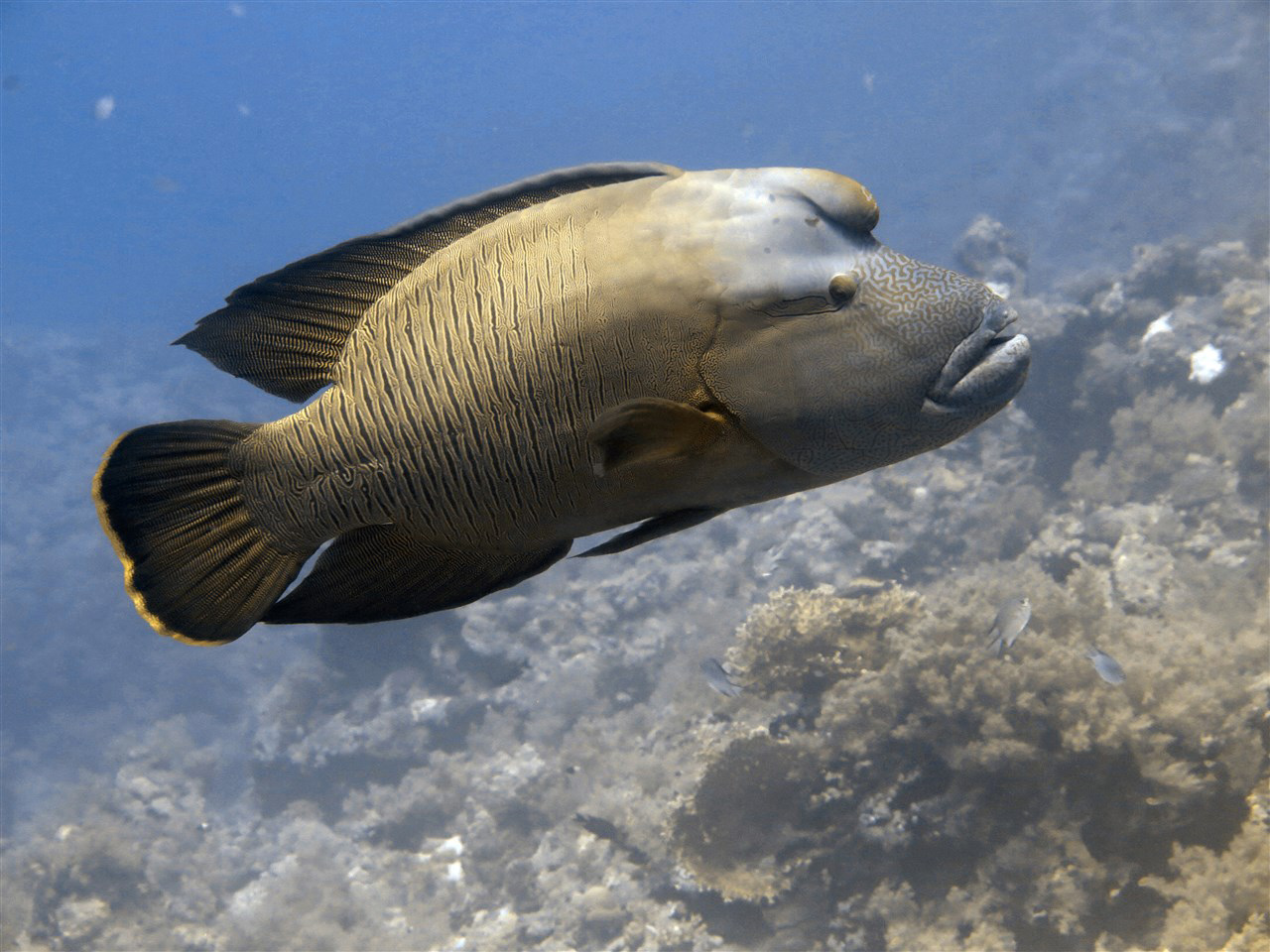
Large Napoleon Wrasse
We saw a couple of these on the dive, as well as a Stonefish and loads of the usual reef fish.
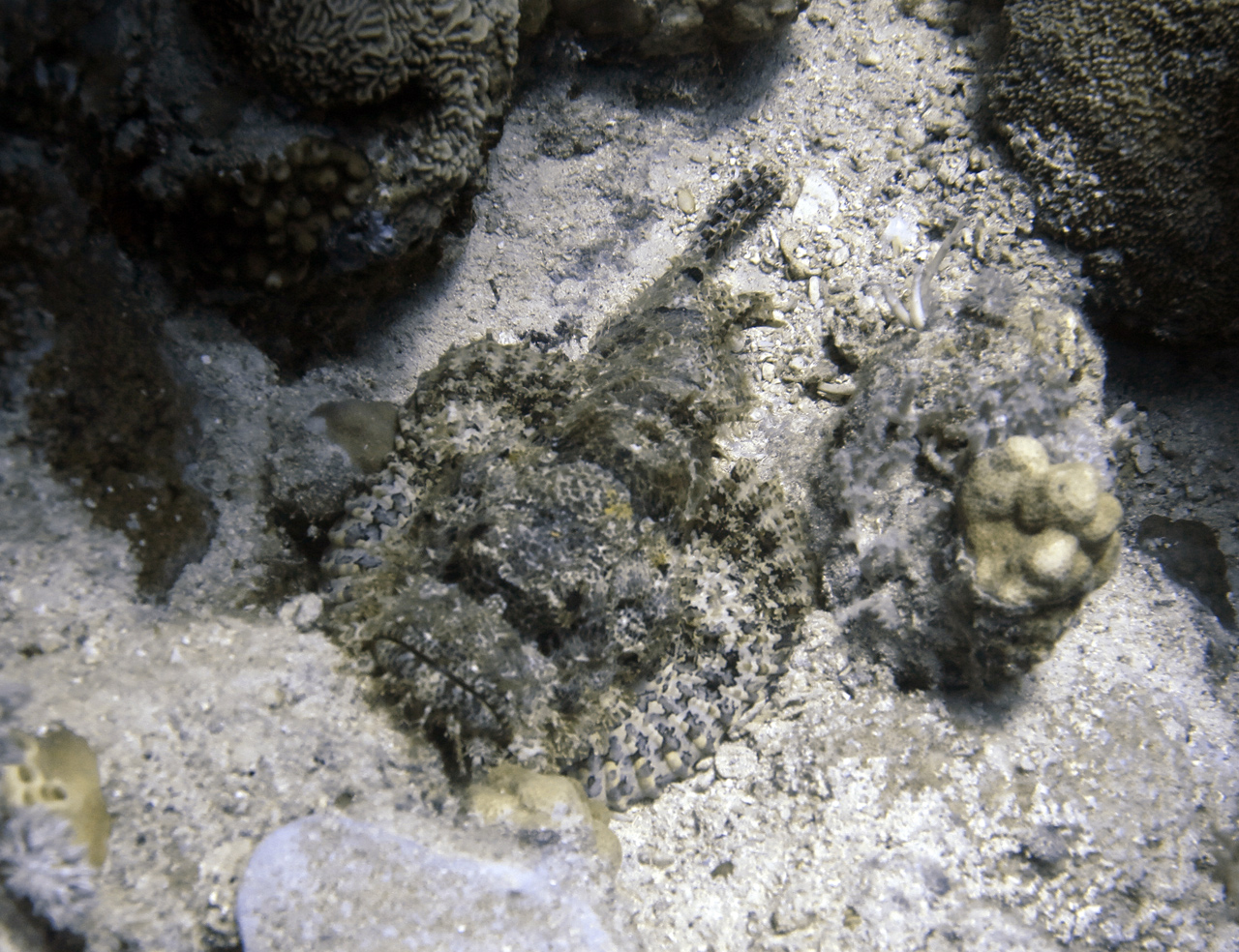
Stonefish
As on the previous dive, we ended the dive exploring in the shallows before heading back onto the boat.
The afternoon dive was on the same site, but this time we used a Zodiac to take us to a further part of the reef with the aim of drifting back to the boat, but it turned out there was no significant current, so we just swam gently along enjoying the abundant life again.
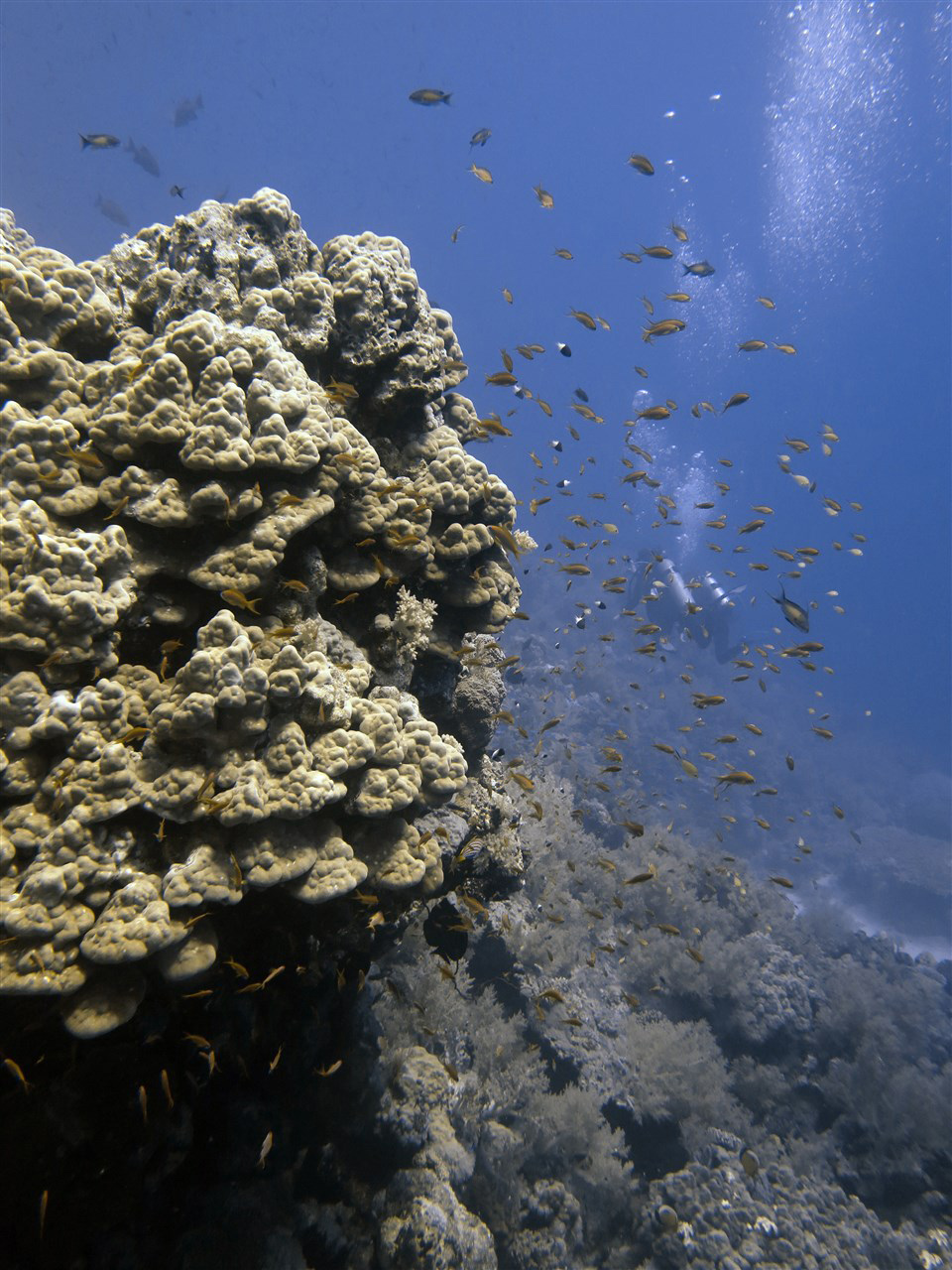
Reef fish galore and varied Coral types were the norm
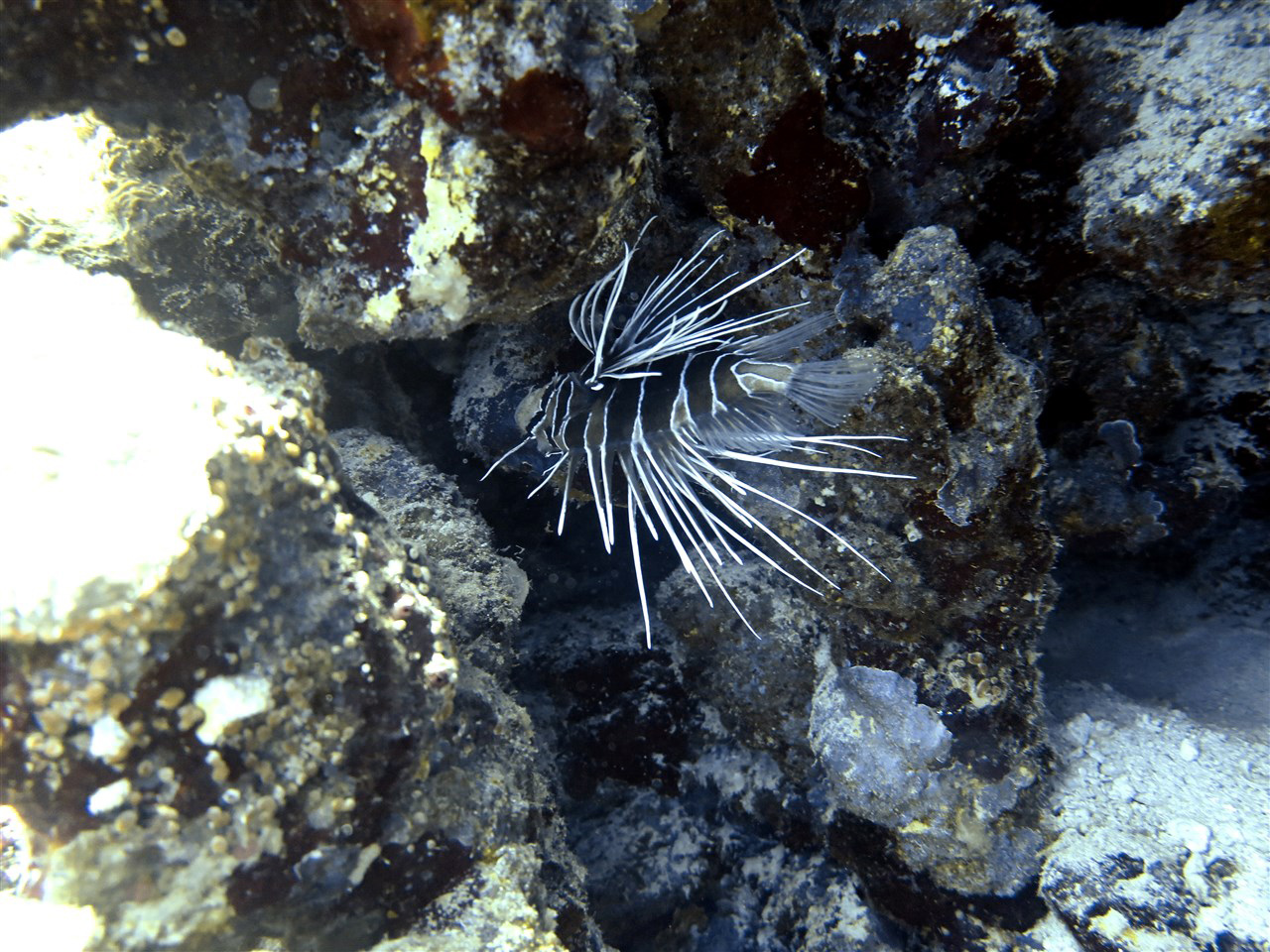
Lionfish were predominantly black and white
As before we spotted a few large Napoleon Wrasse, plus a shoal of Grunts, Moray Eels and the usual supporting cast of colourful reef fish.
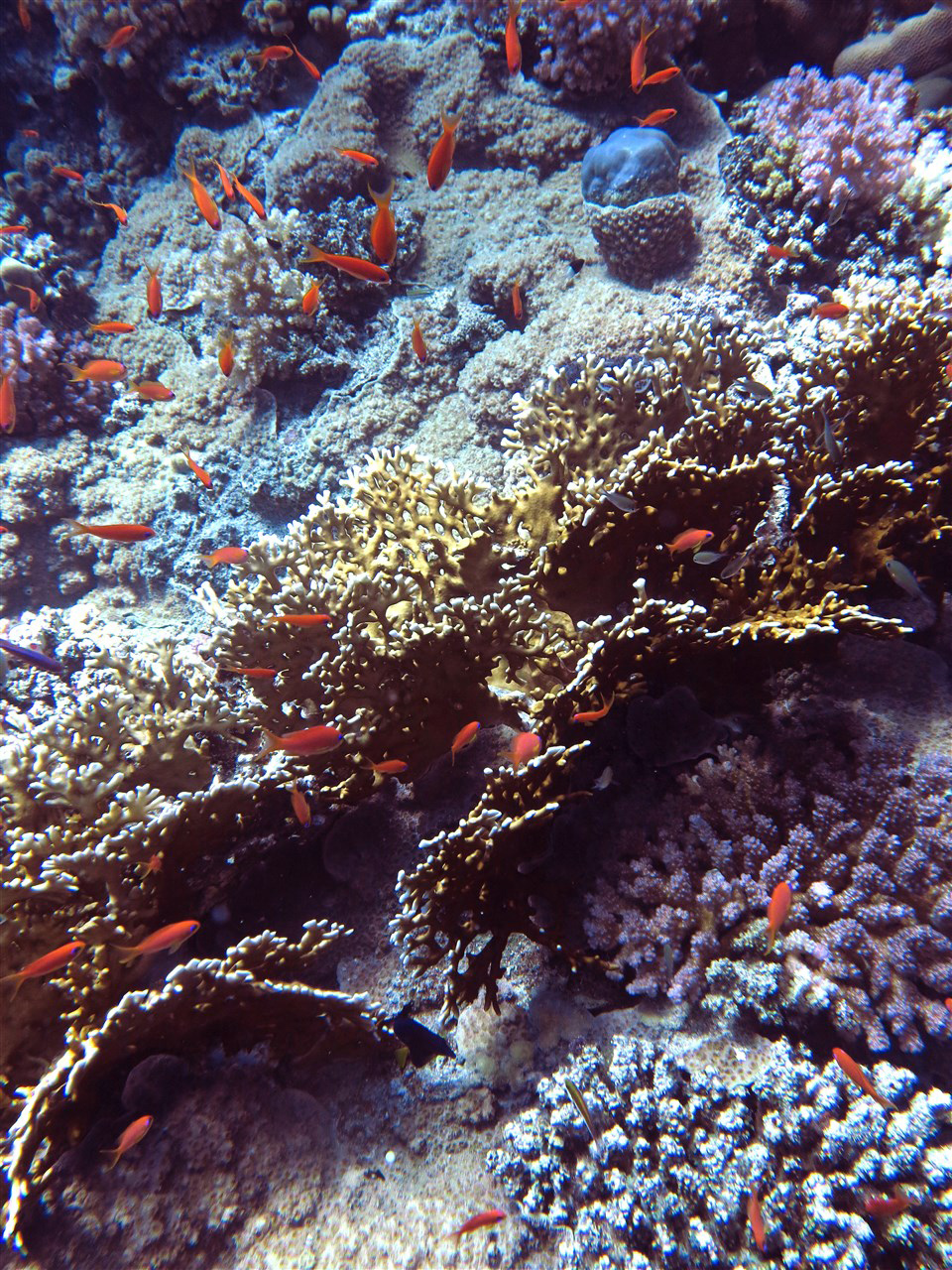
Bright colours in the shallows
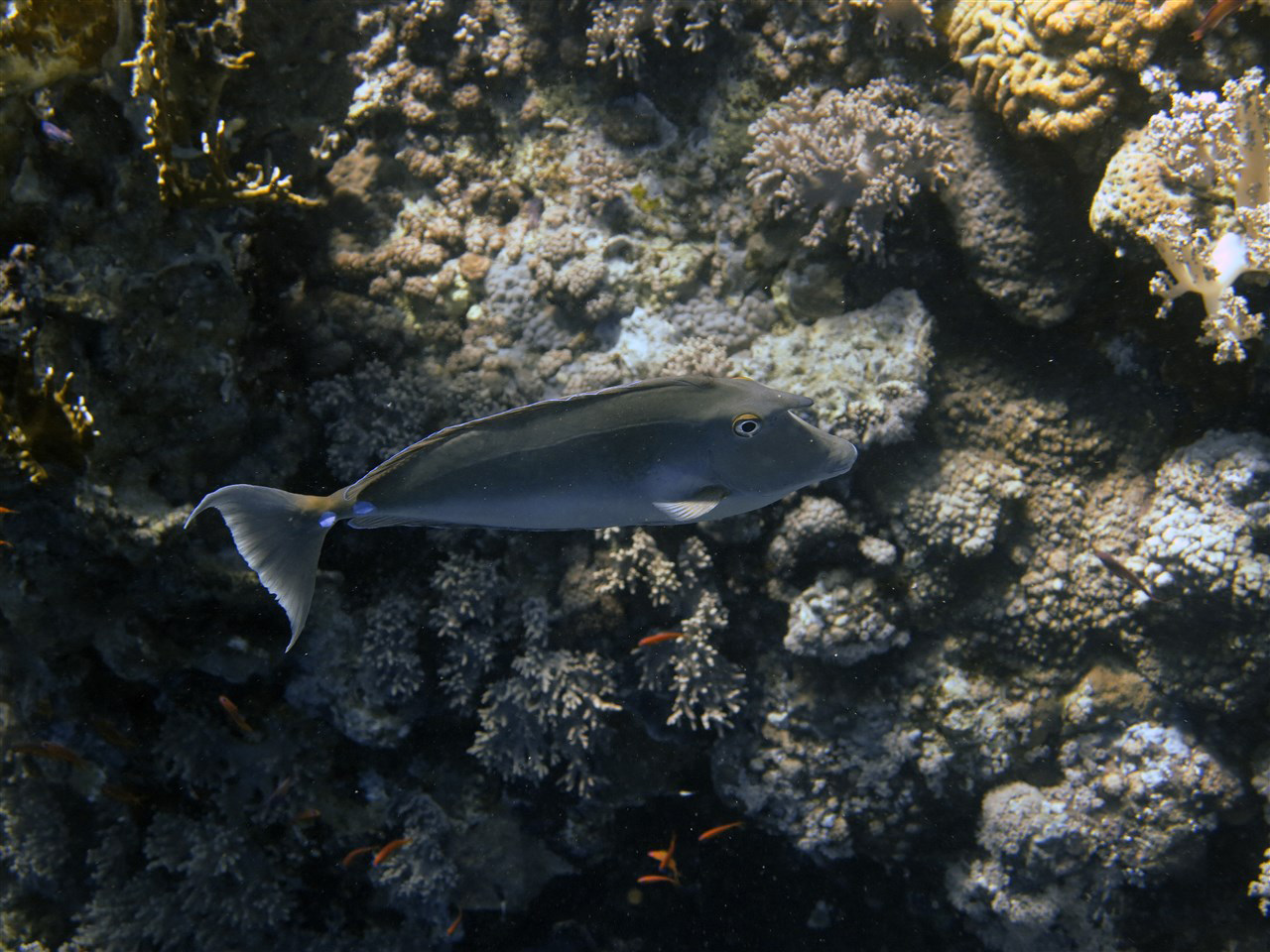
Unicorn Fish
I also spotted a blue and silver fish that I didn’t recognise for the first time here. It seemed to swim ahead of us and then pause, almost as if waiting for us to catch it up.
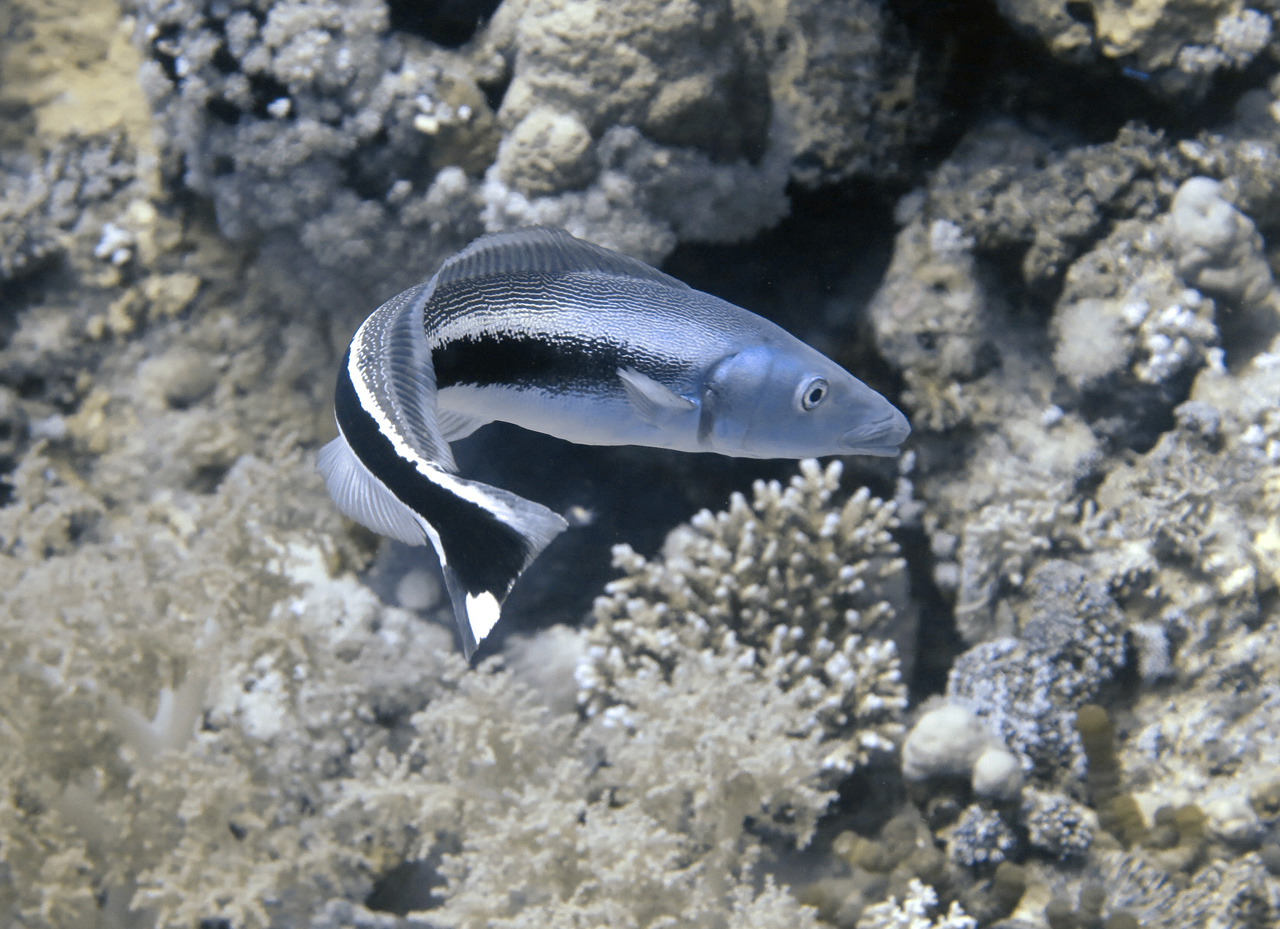
Blue Banquillo
Back on the boat, I identified it as a Blue Banquillo.
Later in the afternoon, we moved again to reach a site named ‘Paradise Reef’ where we carried out a night dive.
Doing the dive in the dark first made it hard to picture what we were seeing, although as our briefing had said, it was a lot of coral clusters on a sandy sea bed, very much a ‘coral garden’, presumably named ‘Paradise’ for its ‘garden of Eden’ like appearance.
There seemed to be less life here than on our previous night dive and, indeed, many of the fish we saw were resting in niches in the coral asleep, a sight that always rather surprises me, although I’ve now seen it a number of times.
We did see some rarer creatures here, though, a Grey Moray eel, a few Brittle Stars and a Thorny Ray, hiding in the sand.
I think it’s fair to say we enjoyed this night dive, though, less than we had the first because of the relative absence of fish, but we all agreed that it looked an interesting reef and we were glad to be diving it again in daylight.
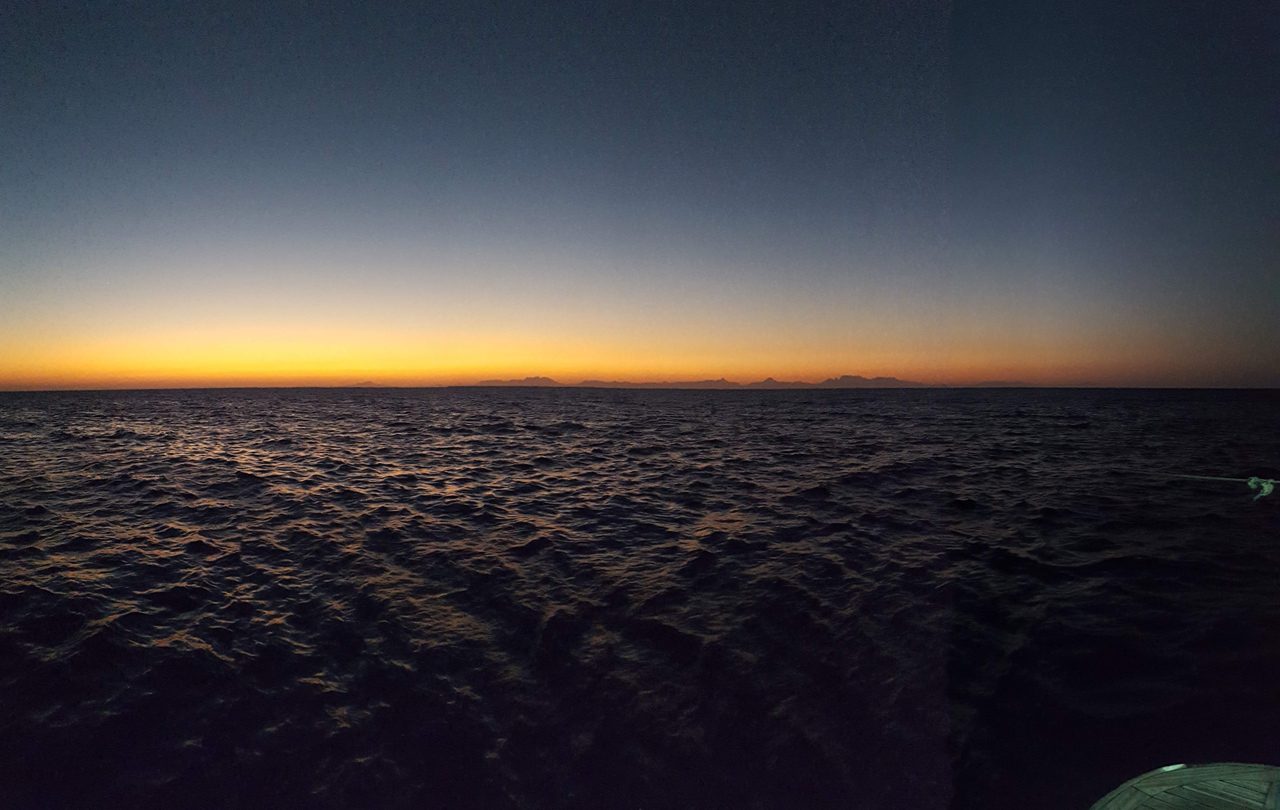
Every night we were treated to glorious, if brief, sunsets
Read some more of my diving experiences, by clicking the icons below.


